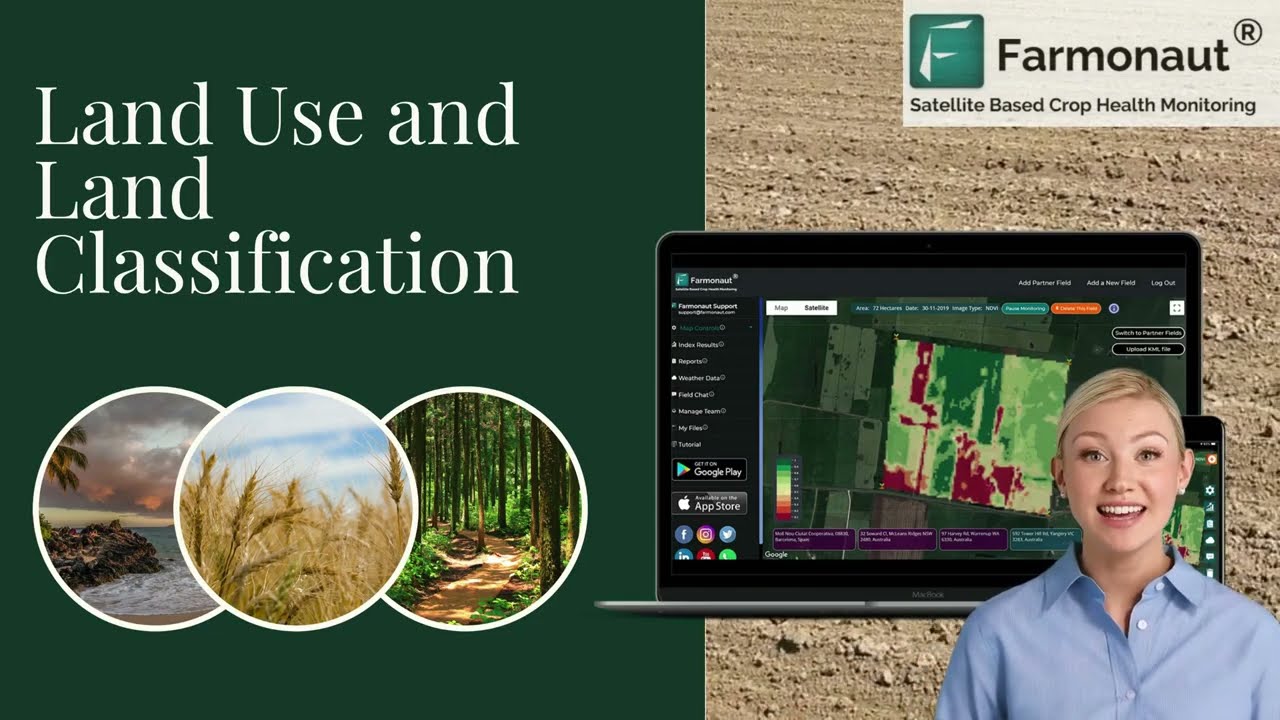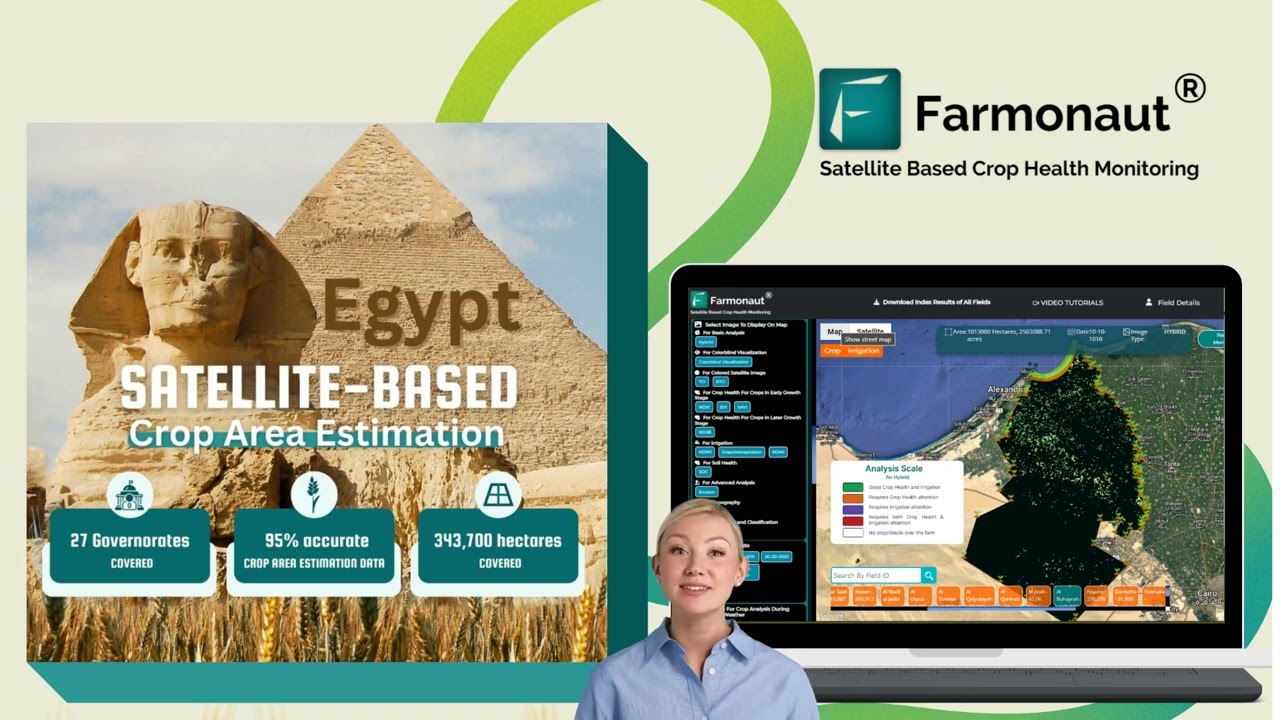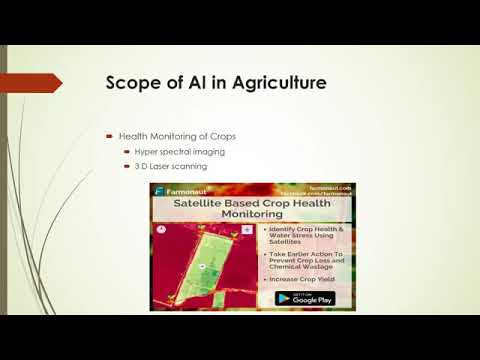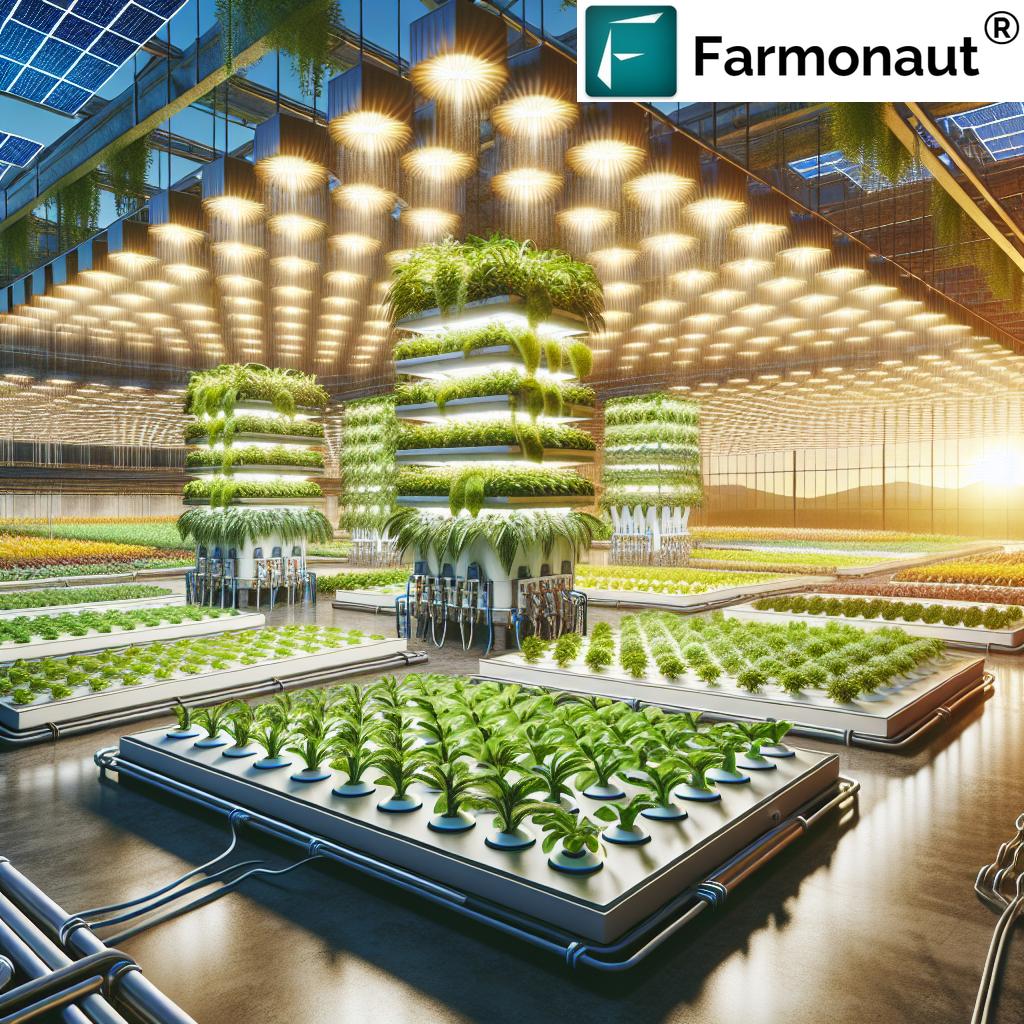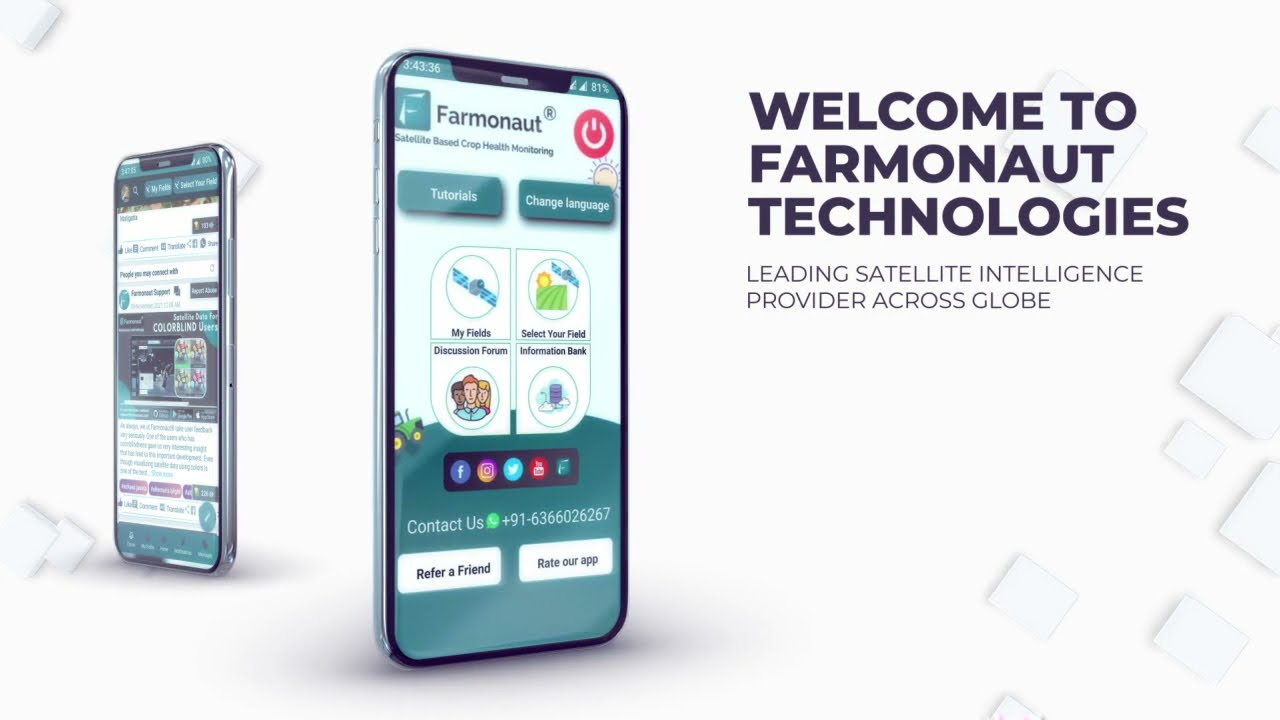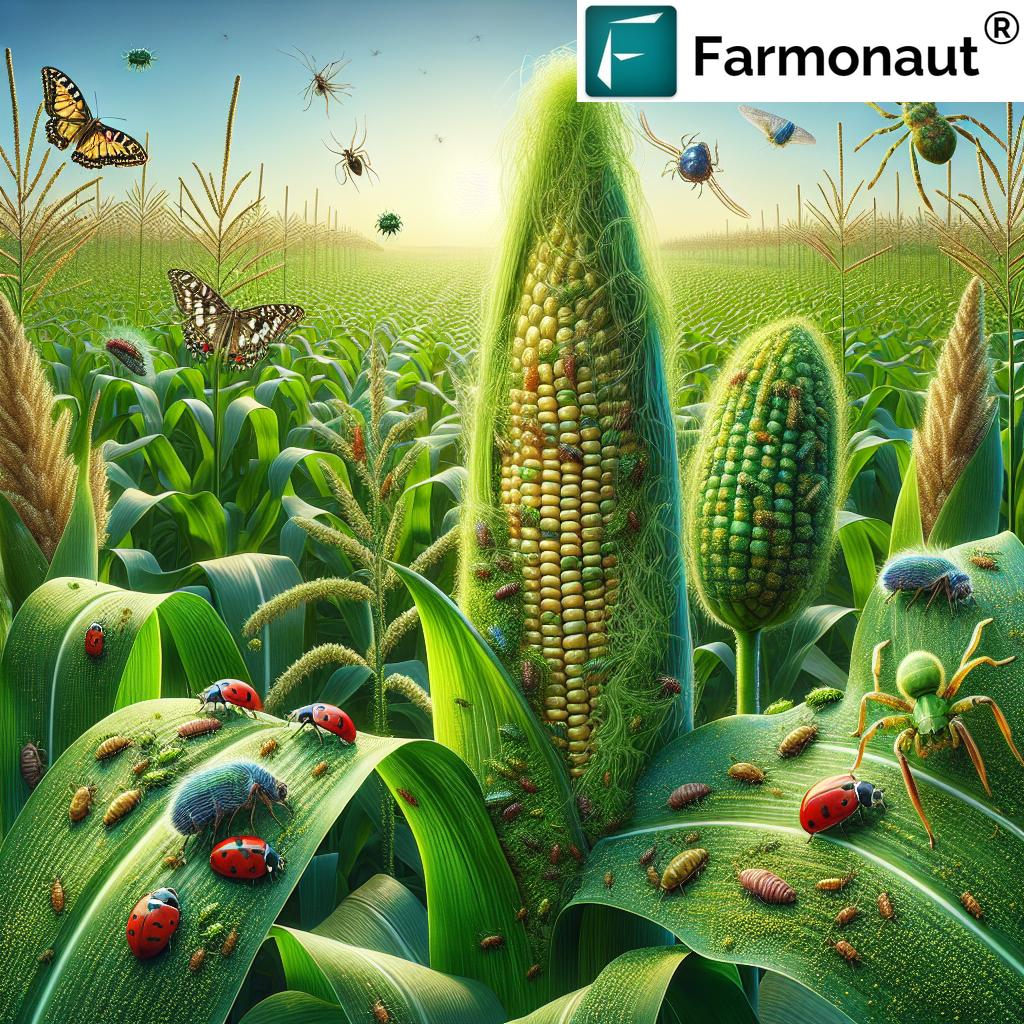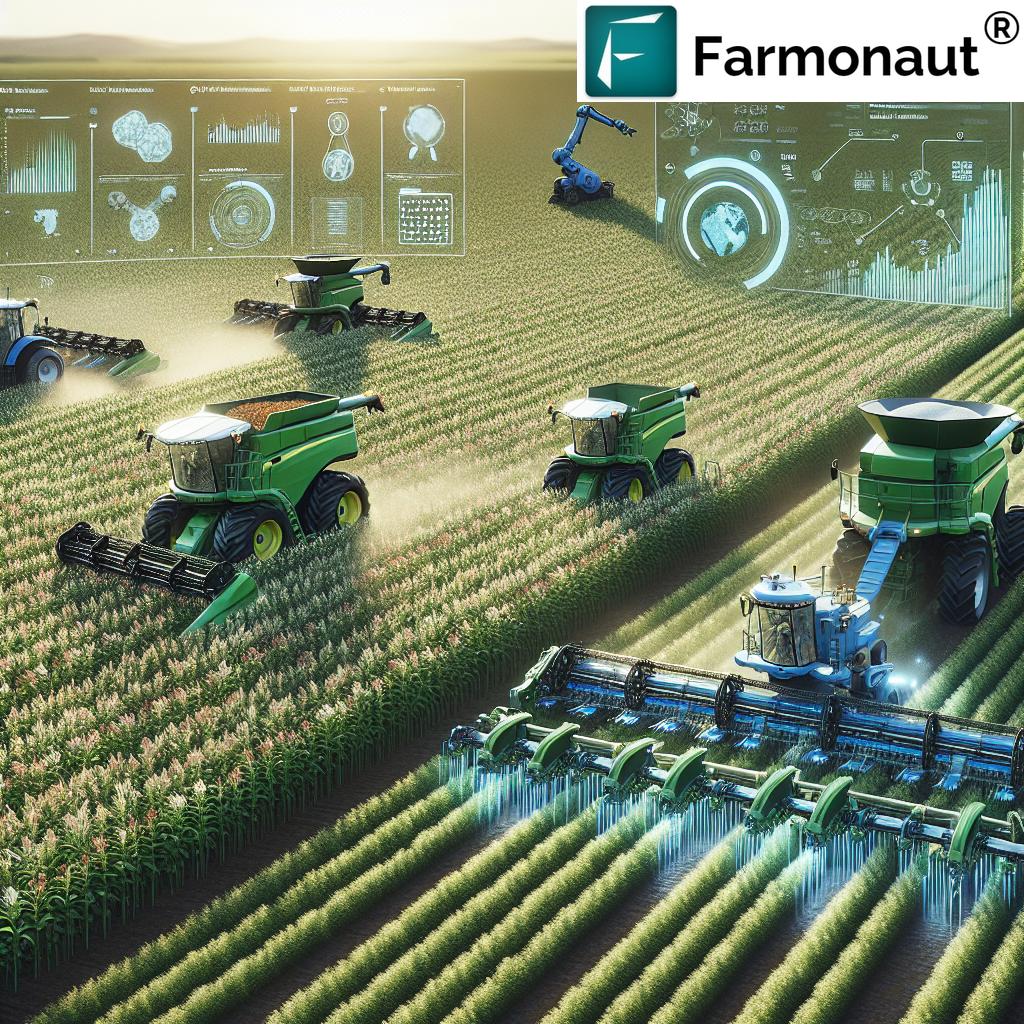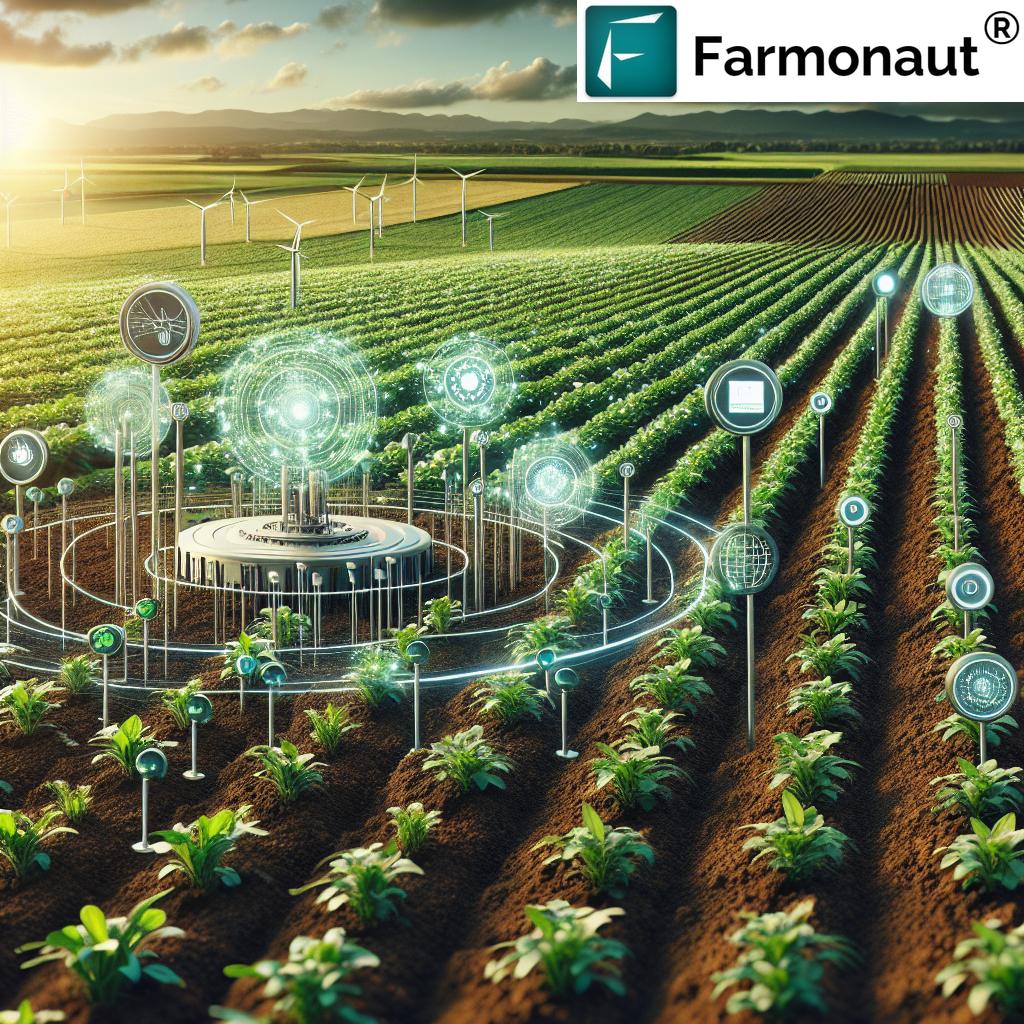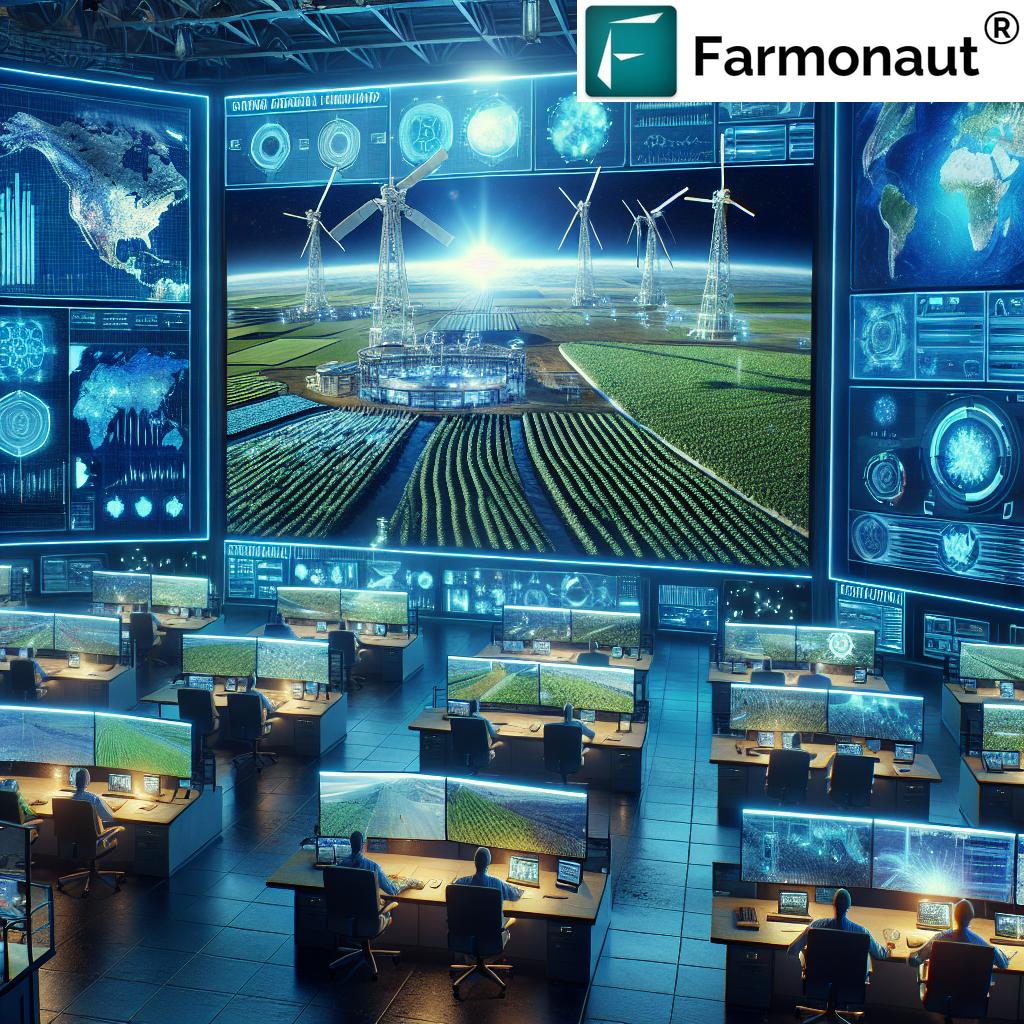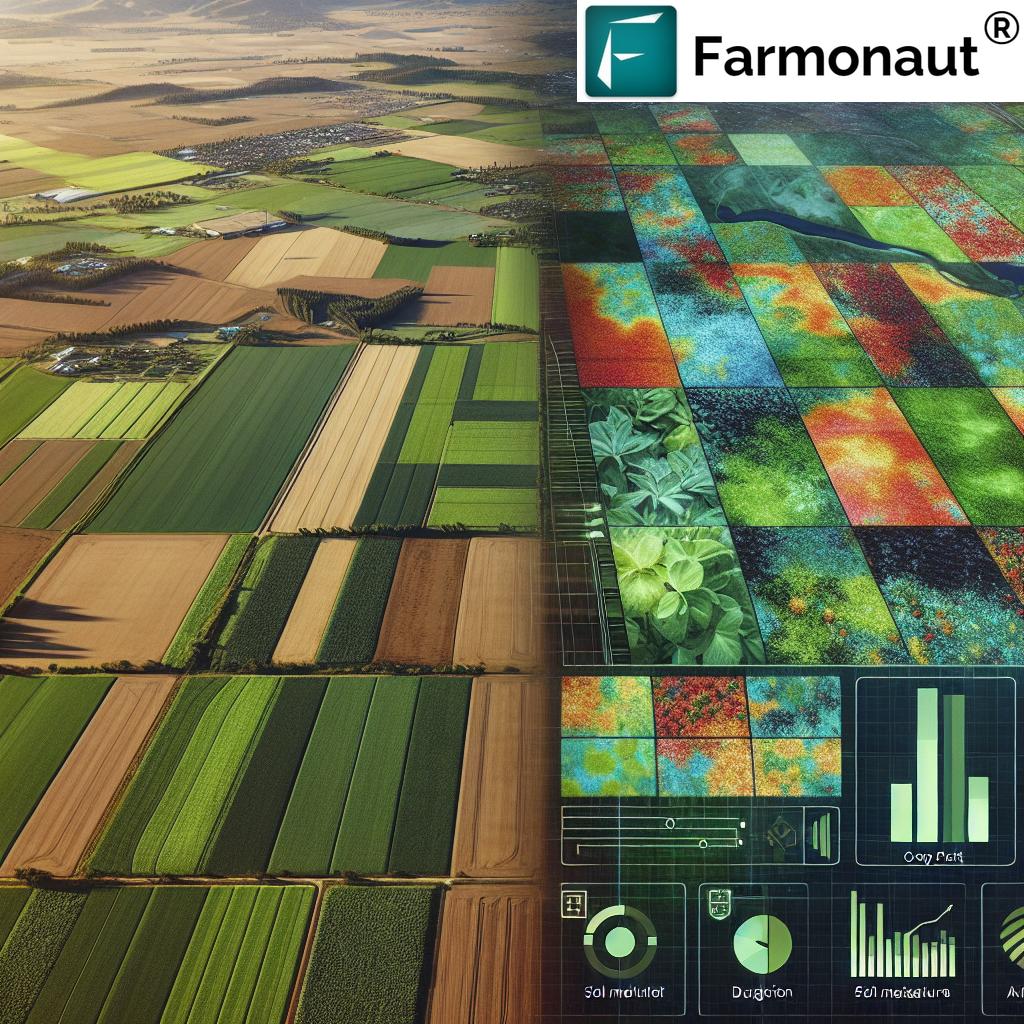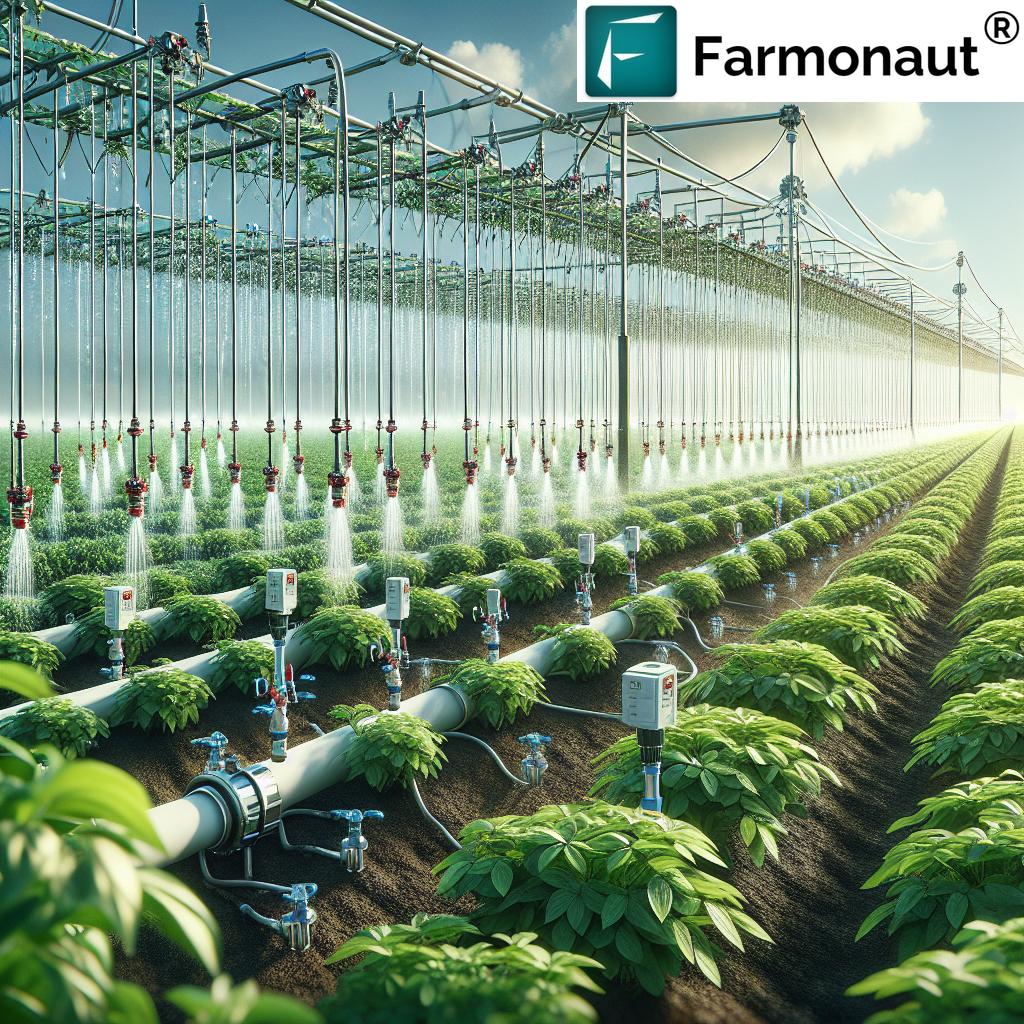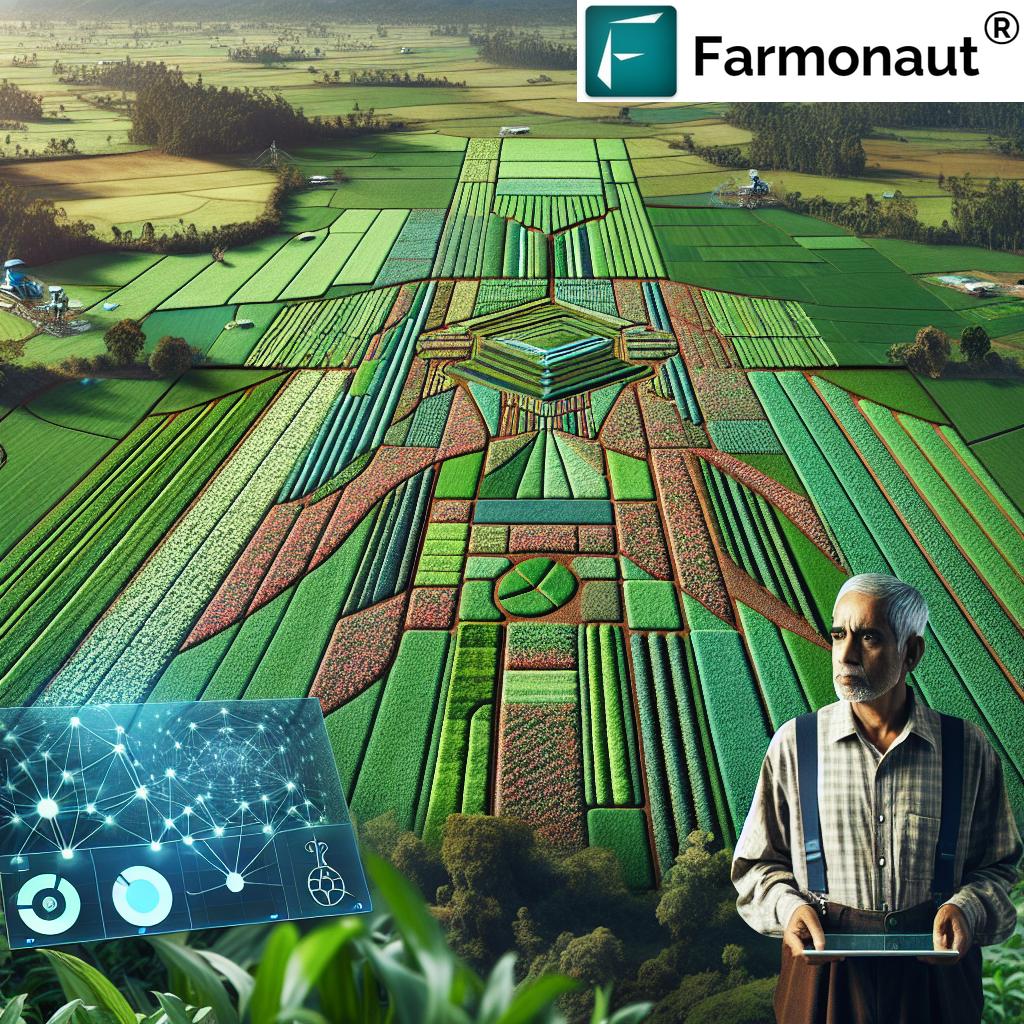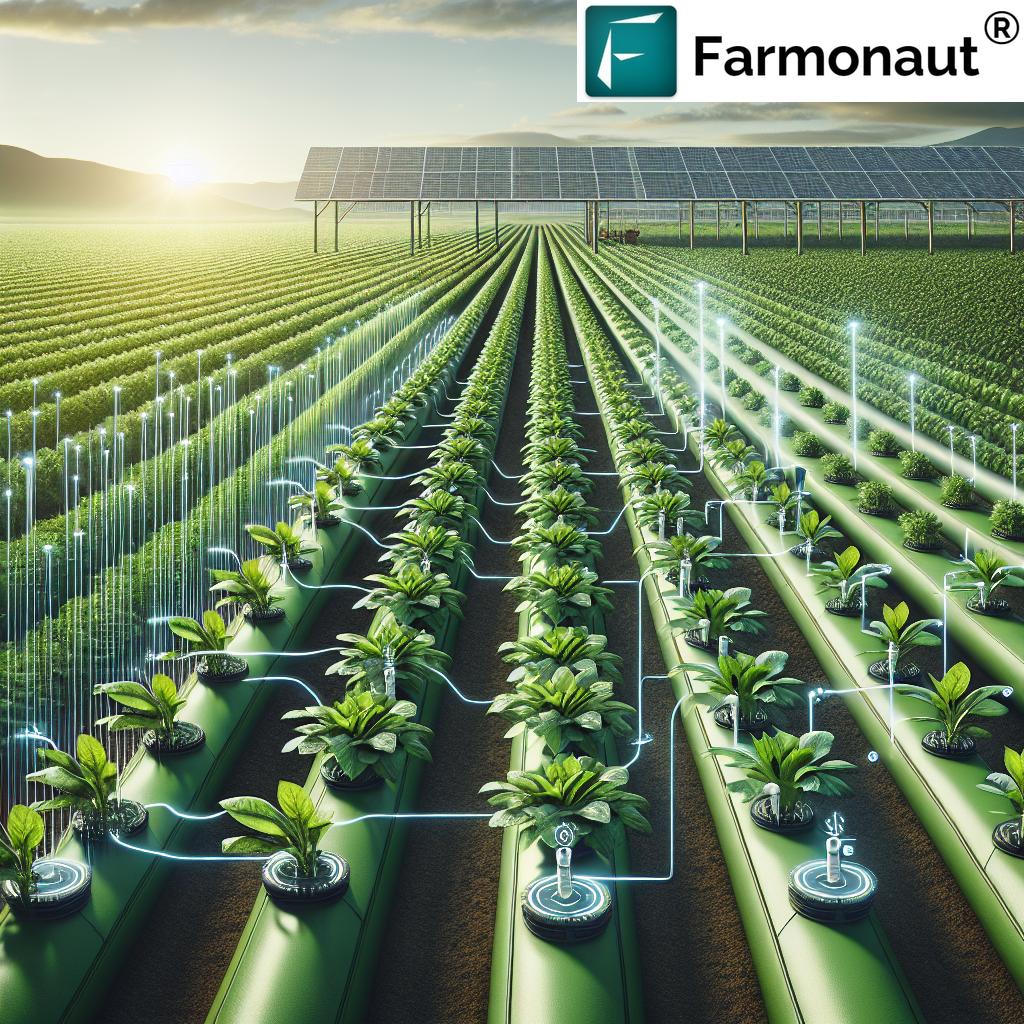Modern Farming: 10 Game-Changing Tech Secrets Exposed
“Precision agriculture can increase crop yields by up to 20% using satellite imagery and data-driven decisions.”
Table of Contents
- Introduction: The New Era of Modern Farming
- 1. Precision Agriculture: Data-Driven Crop Management
- 2. Autonomous Farming Machinery: Robotics Reshaping Operations
- 3. Controlled-Environment Agriculture: Hydroponics, Aeroponics & Vertical Farming
- 4. No-Till Farming: Protecting Soil Health & Reducing Erosion
- 5. Precision Livestock Farming (PLF): Technology Meets Animal Health
- 6. Integration of Renewable Energy on Modern Farms
- 7. Internet of Things in Agriculture & Smart Farming Systems
- 8. Drones in Agriculture: Mapping, Monitoring, & More
- 9. Artificial Intelligence and Robotic Harvesting Automation
- 10. Smart Irrigation Systems: Efficiency in Every Drop
- Regenerative Agriculture Practices: Ensuring Sustainability
- Comparison Table of Modern Farming Technologies
- Farmonaut: Empowering Precision Agriculture Worldwide
- Challenges and Future Considerations
- Frequently Asked Questions
- Conclusion: Sustainable Crop Management for the Next Generation
Introduction: The New Era of Modern Farming
Modern farming has undergone a profound transformation, integrating technological innovation, data, and sustainable practices into every facet of crop and livestock production. The global agricultural sector now faces unprecedented challenges: feeding a rapidly growing population, the effects of climate change, soil degradation, water scarcity, and the ever-present need for environmental conservation. Addressing these demands requires us to rethink how we manage soil, water, crops, and animals—ushering in a new era powered by precision agriculture, smart technologies, and holistic resource management.
In this comprehensive guide, we expose the ten most game-changing secrets that are revolutionizing the way we farm. From autonomous farming machinery and controlled-environment agriculture to drones in agriculture and regenerative agriculture practices, each breakthrough enables us to optimize productivity, reduce resource wastage, and build a more sustainable future for farming. Let’s dive into the technologies, systems, and innovative practices that are shaping modern agriculture today!
1. Precision Agriculture: Data-Driven Crop Management
Why Precision Agriculture is a Game Changer
Precision agriculture has emerged as the backbone of modern farming technologies. It revolves around optimizing every aspect of field management—right from soil preparation, planting, nutrient application, to irrigation—by relying on site-specific data. By using technologies such as GPS mapping, remote sensing, variable rate technology (VRT), and multi-spectral sensors, we can accurately monitor the field and tailor inputs like water, fertilizers, and pesticides to the precise needs of different crop zones.
- Optimized Resource Use: By measuring soil moisture levels, nutrient status, and crop health, we conserve water and boost efficiency.
- Increased Yields: Tailoring management to the field’s unique characteristics maximizes yield potential and ensures better-quality crops.
- Reduced Environmental Impact: Less runoff of fertilizers and pesticides means less pollution and healthier ecosystems.
- Data-Driven Decisions: The ability to monitor, record, and analyze conditions in real time gives us a huge advantage in predicting outcomes and implementing timely interventions.
Modern precision agriculture enables not just higher productivity but also substantial cost savings. For instance, sensors in the field detect subtle variations in soil and crop status—enabling targeted nutrient applications and truly sustainable management.
2. Autonomous Farming Machinery: Robotics Reshaping Operations
The rise of autonomous farming machinery is revolutionizing how we conduct agricultural operations across the globe. Today’s self-driving tractors, robotic harvesters, and automated irrigation systems can function around the clock, removing the limitations of manual labor and reducing physical burden on operators.
- Precision Field Work: Autonomous machines are guided by GPS and IoT systems, ensuring every action—be it planting, spraying, or harvesting—is carried out with utmost accuracy.
- Resource Efficiency: Automation leads to lower fuel consumption, minimal input wastage, and tighter costs control.
- Addressing Labor Shortages: Robotics helps bridge the gap in regions where farm labor is scarce, especially during critical production windows.
- Data Collection: Automated equipment can integrate with sensors and transmit real-time data for performance tracking and fleet management.
While initial investments may be high, the long-term gains in productivity and efficiency make autonomous machinery pivotal for future-focused, sustainable farming.
“Modern sensor-based irrigation systems can reduce water usage in farming by as much as 30%.”
3. Controlled-Environment Agriculture: Hydroponics, Aeroponics & Vertical Farming
Controlled-environment agriculture (CEA) encompasses a range of innovative farming methods—hydroponics, aeroponics, and vertical farming—where key growth factors such as temperature, humidity, light, and nutrients are precisely controlled. These methods offer unmatched opportunities for growing crops in urban and resource-limited environments.
- Hydroponics: Growing plants in nutrient-rich water solutions, eliminating the need for soil.
- Aeroponics: Plant roots are suspended in the air and misted with nutrient solutions, enabling extraordinary nutrient absorption and root oxygenation.
- Vertical Farming: Stacking crop layers vertically in controlled environments—maximizing space use, especially in urban settings.
The benefits of CEA are substantial: year-round production, up to 90% less water usage, high yields per unit area, minimal pesticides, and resilient systems capable of withstanding climate variability. For regions grappling with soil degradation or lack of arable land, CEA unlocks new avenues for local food security.
4. No-Till Farming: Protecting Soil Health & Reducing Erosion
No-till farming is a centuries-old concept revitalized by modern technologies. This practice avoids disturbing the soil through mechanical tillage, leaving crop residues to decompose and enrich the land between seasons.
- Prevents Soil Erosion: Residue cover protects against wind and water erosion and helps maintain soil structure.
- Enhances Water Retention: Mulch from residue improves infiltration and conserves soil moisture levels, which is invaluable in drought-prone regions.
- Boosts Soil Organic Carbon: Increased organic matter fosters biodiversity, supports nutrient cycling, and enables long-term sustainability.
- Reduces Input Costs: Lower fuel and labor requirements make no-till attractive for farmers seeking higher profit margins.
Some challenges, like increased reliance on herbicides, require smart management, but technological tools—including satellite-based crop health monitoring—offer new ways to target weeds more precisely, minimizing environmental impact.
5. Precision Livestock Farming (PLF): Technology Meets Animal Health
Beyond crops, modern agriculture also means deploying innovative technologies in animal production. Precision Livestock Farming (PLF) uses sensors, cameras, and even microphones to monitor livestock health, behavior, and resource use.
- Real-Time Animal Health Monitoring: Wearable or pen-based sensors track vital statistics such as temperature, activity, and feeding patterns for early detection of disease or stress.
- Improved Welfare and Productivity: Data-driven management ensures livestock receive optimal nutrition, clean water, and care—minimizing loss and boosting yields of milk, eggs, or meat.
- Resource Optimization: Advanced analytics enable us to fine-tune feed efficiency and water use, reducing inputs while enhancing output quality.
The future of animal farming is one where technology safeguards animal welfare and advances the efficiency and sustainability of the livestock industry.
6. Integration of Renewable Energy on Modern Farms
In the quest for environmental conservation and energy efficiency, modern farms are increasingly embracing renewable energy.
- Solar Power: From irrigation pumps to smart controllers and even solar tractors, harnessing the sun cuts utility costs and slashes carbon emissions.
- Biogas and Wind: Capturing waste methane or wind energy to run farm equipment or heat greenhouses is another step toward climate-friendly agriculture.
- Grid Independence: Renewable systems can bring energy autonomy to remote farms, reducing vulnerability to fossil fuel market swings.
These technologies align perfectly with regenerative agriculture practices, supporting both high productivity and ecosystem regeneration.
7. Internet of Things in Agriculture & Smart Farming Systems
The Internet of Things (IoT) is at the heart of smart farming, facilitating seamless connectivity between field sensors, machinery, and central management platforms. By installing nodes throughout a farm, we collect real-time data on every aspect of the operation—from soil moisture levels, crop growth, and weather conditions, to equipment status.
- Remote Monitoring: We can access field information via mobile apps or computers, enabling quick response to developing issues.
- Targeted Interventions: Automated alerts allow us to schedule irrigation, apply fertilizer, or deploy pest controls exactly when and where they’re needed.
- Resource Efficiency: IoT networks help manage inputs for optimal use, cutting costs and bolstering sustainable crop management.
The internet of things in agriculture delivers a powerful advantage by bringing transparency, efficiency, and scalability to farms of all sizes. Examples include weather stations, sensor-based water meters, and connectable autonomous machinery—all working together in smart, data-driven harmony.
Integrate Farmonaut’s satellite and weather data into your own systems with our flexible API for next-level farm management.
|
Access developer docs here.
8. Drones in Agriculture: Mapping, Monitoring, & More
The deployment of drones in agriculture gives us a “bird’s-eye” view of our fields. Equipped with advanced cameras and sensors, drones serve many transformative functions:
- High-Resolution Mapping: Create detailed maps for crop, soil, and water management.
- Crop Health Monitoring: Multispectral sensors detect crop stress, pest outbreaks, and nutrient deficiencies, enabling targeted treatment.
- Precision Application: Drones are now used for spraying fertilizers, pesticides, and even seeds, greatly reducing input costs and environmental exposure.
- Disaster Assessment: Aerial surveys after storms or floods help us quickly assess crop damage and plan recovery actions.
By integrating drone imagery with AI-powered platforms like Farmonaut’s, farmers gain faster, more precise insights into field conditions, supporting smarter decisions and lower risks.
9. Artificial Intelligence and Robotic Harvesting Automation
Artificial Intelligence (AI) and robotic harvesting automation represent the cutting edge of digital agriculture. These systems apply machine learning algorithms and robotics to:
- Analyze Big Data: Predict weather impacts, optimize crop scheduling, and detect emerging pest or disease risks.
- Enable Automated Planting and Harvesting: Robotic harvesters pick crops at peak ripeness, while AI-driven planters ensure precise seed placement and spacing.
- Reduce Labor Costs: Machines automate repetitive, physically demanding tasks—boosting efficiency and addressing labor supply issues.
- Enhance Crop Quality: Computer vision and advanced sensors minimize crop damage during harvest, maximizing market value.
From AI-powered farm advisory systems to autonomous fruit-picking robots, these advances define the era of data-driven, scalable agriculture.
10. Smart Irrigation Systems: Efficiency in Every Drop
Smart irrigation systems are transforming the use of water—one of agriculture’s most precious resources. These systems use networked sensors, weather data, and automation to:
- Monitor Soil Moisture: Real-time readings ensure irrigation is provided only when and where it’s needed.
- Integrate Weather Forecasts: Inputs from local stations or satellite networks allow the system to adjust schedules based on upcoming rain or drought risk.
- Auto-Schedule Watering: Automated valves and pumps apply the right amount of water, conserving supplies and reducing run-off or leaching.
In regions facing water scarcity, such precision not only enables sustainable crop production but also shields farms from the volatility of climate change.
Regenerative Agriculture Practices: Ensuring Sustainability
Regenerative agriculture is more than just sustainability—it’s about improving natural capital and restoring ecological balance. Through techniques like:
- Crop Rotation: Alternating crop species to enhance soil fertility and break pest cycles.
- Cover Cropping: Planting off-season covers that anchor soil, fix nitrogen, and support pollinators.
- Reduced Tillage: Leaving soil undisturbed to foster organic carbon build-up and prevent erosion.
We increase water retention, boost biodiversity, sequester carbon, and make our farms resilient to storms and climate change. Regenerative practices are now being accelerated by digital mapping, remote sensing, and satellite analytics.
Comparison Table of Modern Farming Technologies
| Technology Name | Description | Estimated Yield Improvement (%) | Estimated Cost Savings (%) | Sustainability Impact | Key Applications |
|---|---|---|---|---|---|
| Precision Agriculture | Data-driven management of crops using sensors, GPS, and remote sensing. | 15-25 | 10-20 | High | Yield optimization, resource management, reduced input waste |
| Autonomous Farming Machinery | Robotic tractors, harvesters, and automated systems for field operations. | 10-20 | 10-30 | Medium | Planting, harvesting, fleet optimization, reduced labor dependency |
| Controlled-Environment Agriculture | Hydroponics, aeroponics, and vertical farming in regulation grow spaces. | 20-35 | 20-40 | High | Urban farming, year-round production, water conservation |
| No-Till Farming | Crop planting without disturbing the soil or tilling residues. | 10-18 | 8-15 | High | Soil carbons, reduced erosion, water retention, less fuel usage |
| Precision Livestock Farming | Sensor- and AI-enabled animal health and resource management. | 10-25 | 12-20 | Medium | Animal health monitoring, better feed use, welfare improvement |
| Renewable Energy | Solar, wind, and biogas for off-grid, sustainable energy on farms. | 5-10 | 15-40 | High | Pumping, greenhouse energy, powering controls and machinery |
| IoT & Smart Farming Systems | Connected sensors, devices, and remote monitoring/control systems. | 12-20 | 15-25 | High | Real-time monitoring, automation, predictive management |
| Drones in Agriculture | Aerial imaging, mapping, and spraying with UAV technologies. | 10-15 | 10-20 | Medium | Field mapping, pest detection, disaster assessment |
| AI & Robotic Harvesting Automation | Artificial intelligence for data analysis and robotic harvesters. | 15-30 | 12-22 | Medium | Automated harvest, planting, intelligent advisories |
| Smart Irrigation Systems | Automated, sensor-based systems optimizing water delivery. | 12-25 | 20-35 | High | Water conservation, improved yield, drought resilience |
Farmonaut: Empowering Precision Agriculture Worldwide
Farmonaut stands at the forefront of the agricultural technology revolution, empowering farmers, agribusinesses, and policymakers with affordable precision agriculture solutions. Unlike many legacy systems, Farmonaut leverages cost-effective, hardware-free platforms that integrate seamlessly with existing farming operations.
- Satellite-Based Crop Health Monitoring: Multispectral satellite images reveal crop health, vegetation indices (NDVI), and soil moisture levels in real-time, driving smart irrigation, fertilizer, and pest management decisions.
- Jeevn AI Advisory System: Personalized, AI-powered advice for in-season crop management; weather forecasts and alerts enhance productivity and resource efficiency.
- Blockchain Traceability: Transparent and secure documentation for every product on its journey from farm to end user—crucial for global food chains and traceable agricultural commodities.
- Fleet and Resource Management: Intuitive dashboards for optimizing machinery operations, lowering costs and improving vehicle safety.
- Carbon Footprinting: Precise analytics for tracking and reducing carbon emissions, upholding commitments to environmental sustainability and regulatory compliance.
Available on web, Android, and iOS, Farmonaut democratizes modern precision agriculture—granting smallholders, commercial farms, and government agencies access to the data and tools that drive efficient, profitable, and sustainable farming decisions.
Challenges and Future Considerations
While modern farming technologies unlock new potential, we must also address real challenges:
- High Initial Investment: Advanced systems, especially autonomous machinery, require significant upfront costs—posing barriers for many small-scale farmers.
- Learning Curve: Adapting to data-driven systems requires training and support for both new and experienced growers.
- Data Privacy & Security: As farms become digital, concerns around data ownership, privacy, and cyber-security grow.
- Energy Consumption: Controlled-environment agriculture, while water-efficient, can be energy-intensive unless aligned with renewable sources.
- Equitable Access: Technology must be scalable and affordable—making sure benefits reach all stakeholders within the agricultural sector.
Farmonaut continues to focus on delivering scalable, cost-effective, and accessible solutions, promoting both innovation and sustainability in global agriculture.
Frequently Asked Questions
What is precision agriculture and how does it impact crop productivity?
Precision agriculture uses data-driven technologies like GPS, sensors, and satellite imagery to optimize every aspect of crop management. By targeting resources efficiently, it increases yield by 15-25% and reduces input costs, making farming more sustainable and profitable.
How do drones in agriculture improve field management?
Drones equipped with advanced sensors and cameras provide high-resolution field mapping, enabling early detection of pests, nutrient deficiencies, and disease outbreaks. Drones can also be used for precision spraying and rapid post-disaster crop damage assessment.
What role does Farmonaut play in modern farming technologies?
Farmonaut offers a cloud-based solution integrating satellite-based crop health monitoring, AI-driven advisories, blockchain traceability, and fleet management to help farmers optimize yields, conserve resources, and meet the challenges of modern agriculture affordably.
Are modern farming technologies accessible to small-scale farmers?
Yes, platforms like Farmonaut are specifically designed to lower entry barriers. With affordable subscriptions, web and mobile interfaces, and minimal hardware requirements, smallholders can access the benefits of precision agriculture.
How do smart irrigation systems contribute to water conservation?
Smart irrigation relies on real-time soil moisture, weather inputs, and automation to deliver water only where and when it’s needed—often reducing water usage by 20-30% compared to traditional/manual methods.
How can I integrate Farmonaut’s data into my own agricultural software?
Farmonaut provides an API for satellite and weather data, enabling developers to build or enhance existing agri-applications with powerful analytics and remote monitoring capabilities. Request API access or read the developer documentation.
Conclusion: Sustainable Crop Management for the Next Generation
Modern farming technologies are radically transforming the global agricultural landscape. By integrating precision agriculture, autonomous farming machinery, controlled-environment agriculture, smart irrigation systems, drones in agriculture, and regenerative agriculture practices, we unlock enormous potential for productivity, sustainability, and food security. The path forward is not without challenges, but companies like Farmonaut are closing the gap—making advanced solutions accessible, scalable, and actionable for producers everywhere.
By embracing innovation, data-driven management, and a commitment to environmental stewardship, we ensure both our present prosperity and a sustainable future for agriculture around the world.






